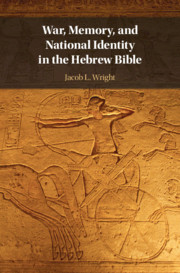Book contents
- War, Memory, and National Identity in the Hebrew Bible
- War, Memory, and National Identity in the Hebrew Bible
- Copyright page
- Dedication
- Contents
- Preface
- Introduction
- Part I Refugee Memories: Negotiating Relations and Borders with Neighboring States
- Part II Kinship and Commandment: The Transjordanian Tribes and the Conquest of Canaan
- Part III Rahab: An Archetypal Outsider
- Part IV Deborah: Mother of a Voluntary Nation
- Bibliography
- Index of Authors’ Names
- Index of Biblical References
- Index of Literary References
- Index of Subjects
- References
Bibliography
Published online by Cambridge University Press: 27 July 2020
- War, Memory, and National Identity in the Hebrew Bible
- War, Memory, and National Identity in the Hebrew Bible
- Copyright page
- Dedication
- Contents
- Preface
- Introduction
- Part I Refugee Memories: Negotiating Relations and Borders with Neighboring States
- Part II Kinship and Commandment: The Transjordanian Tribes and the Conquest of Canaan
- Part III Rahab: An Archetypal Outsider
- Part IV Deborah: Mother of a Voluntary Nation
- Bibliography
- Index of Authors’ Names
- Index of Biblical References
- Index of Literary References
- Index of Subjects
- References
- Type
- Chapter
- Information
- War, Memory, and National Identity in the Hebrew Bible , pp. 253 - 268Publisher: Cambridge University PressPrint publication year: 2020
- Creative Commons
- This content is Open Access and distributed under the terms of the Creative Commons Attribution licence CC-BY-NC-ND 4.0 https://creativecommons.org/cclicenses/



